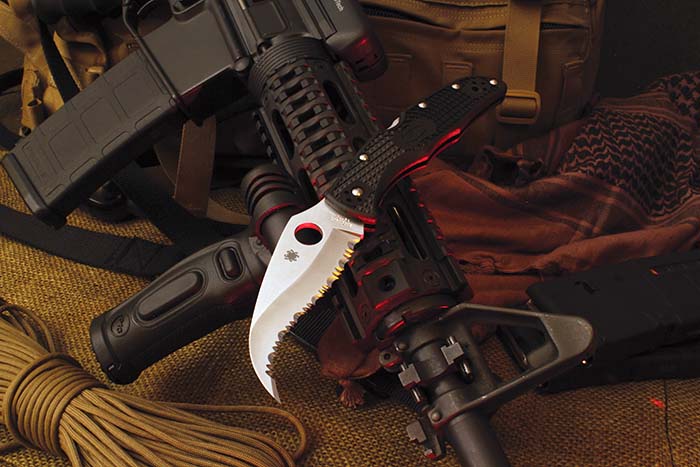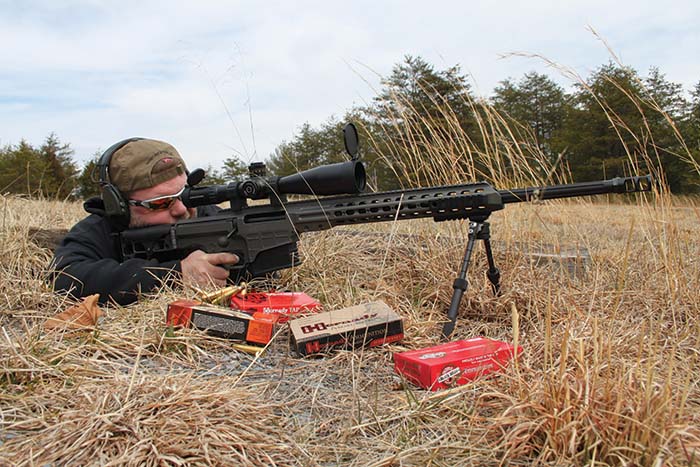By Michael Janich –
Like firearms, not all knives are created equally. Just as the 1911, the Browning High-Power, the Uzi, and the Thompson transcended their roles as weapons to become historical icons, the Fairbairn-Sykes dagger, the KA-BAR, and the Gerber Mark II made indelible marks on the history of edged weapons. In the same spirit, one of the most distinctive and recognizable folding knives ever produced is the Spyderco Civilian.
In 1981, Spyderco’s founder, Sal Glesser, single handedly revolutionized the knife industry by defining the modern folding knife. First, he gave it the capability to be deployed quickly and positively with only one hand via his Trademark Round Hole in the blade. To ensure immediate access and make its deployment even quicker, he added a spring clip that keeps the knife poised at the top of the pocket. And finally he supercharged the cutting power of the humble pocketknife by adding scientifically designed serrations to the cutting edge.
Although commonplace now, these features set Spyderco knives well apart from the competition in the early 1980s. They also made them the tools of choice of savvy law enforcement personnel who appreciated them as both reliable tools and potent back-up weapons in officer survival situations. As a direct result of this dedicated law enforcement following, in the late 1980s, Spyderco was approached by agents of a U.S. federal law enforcement agency with a request to produce a special-purpose folding knife. These agents regularly engaged in undercover narcotics operations that made the carry of a traditional sidearm or even a backup pistol impossible. To give themselves a fighting chance if a drug buy went south, they wanted a folding knife that could be easily carried and concealed, but had the capacity to inflict massive damage with simple, gross-motor-skill tactics. They were not trained knife fighters, so they wanted a knife that would transform instinctive offensive and defensive actions into devastating fight-stopping tactics.
The Reverse “S”
Ever a patriot, Spyderco’s founder also enjoys a challenge; so he immediately went to work on the project. His design goals were simple: create a knife that has the capacity to create devastating damage when wielded by a person with minimal training using instinctive gross motor skills. After giving the challenge considerable thought, Glesser looked to nature – specifically the claws and talons of animals – for the solution.
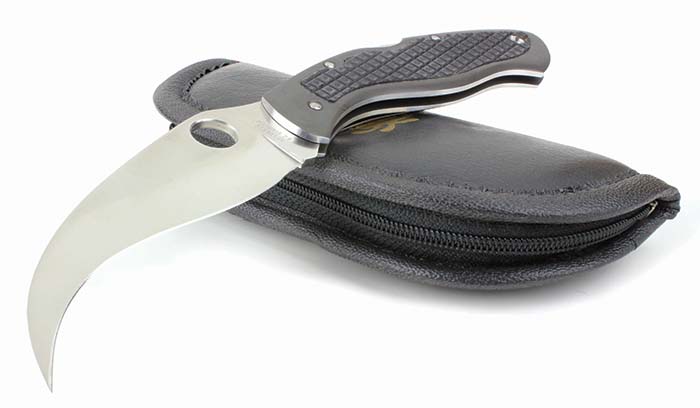
Most conventional knife blades offer two distinctly separate functions: cutting with the edge(s) and piercing with the point. Although some advanced techniques of wielding a knife can effectively combine these two functions, typically they are separate actions.
An animal’s claw, however, operates very differently. Because of its hooked shape, the point of the claw makes contact first, even when powered by a simple gross-motor-skill swing. As the point penetrates, it pulls the target tissue into the concave of its curved shape. This “gathering” action is also similar to the shearing mechanics of the concave edge of a sickle. When translated to a knife blade, the result is an amazingly destructive dynamic that transforms a single, instinctive swing into a deeply penetrating thrust and a powerful shearing cut, all in one motion.
The claw-shaped blade, traditionally known as a “hawkbill” profile, was really nothing new and had been around in various forms for centuries. Although it was a good place to start, it had one major shortcoming: when extended to a longer blade capable of reaching vital targets in the human body, it also became prone to snagging – especially when directed at limbs or other targets with underlying bone. If the point penetrated beyond the bone, the blade hooks on the bone and the cutting action stops. To get the blade back, you must either retract completely and abandon the cut or radically articulate your wrist to contour around the bone. To Glesser, neither of these options was acceptable. Instead, he devised a better solution that combines all the advantages of a hawkbill blade with those of a conventional blade shape. The result was the Reverse “S” blade profile.
Conventional blades cut most efficiently when they make initial contact with the base of the edge (the “heel”) and the entire length of the edge is drawn through the target with constant or increasing pressure. This cutting action uses the full length of the edge and easily contours around bones. Glesser not only combined this cutting dynamic with the advantages of the hawkbill, he accentuated it by curving the heel of the edge outward into a convex shape. The resulting blade shape – an outward curving bade and an inward curving hook near the tip – resembled a backwards letter “S” and was dubbed the Reverse “S” profile. When executed with Spyderco’s scientifically optimized “SpyderEdge” serration pattern, it yielded an amazingly powerful cutting weapon.
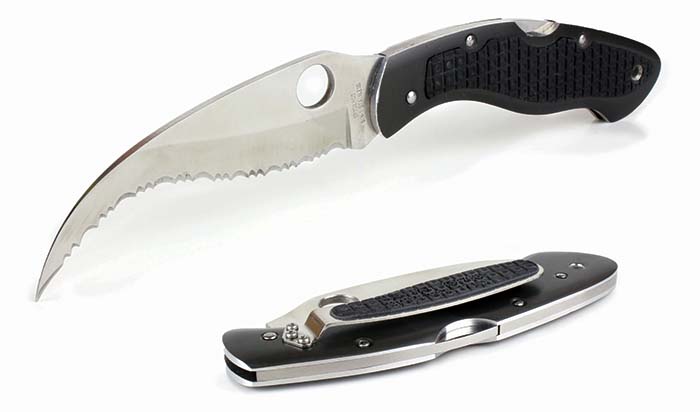
The Evolution of the Civilian
The original Spyderco Civilian was released in 1990 and featured a GIN-1 (Gingami-1) stainless steel blade mated to a handle machined from aircraft quality aluminum. The satin-finished handle, which housed the knife’s sturdy back lock mechanism, had textured Kraton rubber inlays for a secure grip and a Kraton-inlaid pocket clip that offered right-side, tip-down carry. The Civilian’s specialized design and sophisticated blade grind were protected by a U.S. design patent and instantly established it as one of the most unusual and distinctive factory knives ever produced. Manufactured by G. Sakai in Japan only in limited quantities, it also became both an instant success and a status symbol among its intended audience of law enforcement officers.
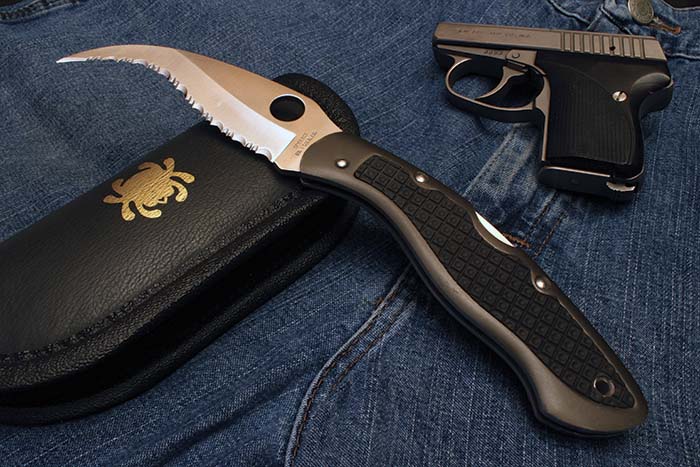
Later versions of the aluminum-handled Civilian featured a gray Tufram handle coating and were made with GIN-1, G-2 (literally another designation for the GIN-1 alloy), and ATS-55 blade steels. The imposing Reverse “S” blades of these knives boasted Spyderco’s fully serrated “SpyderEdge” serration pattern; however, a special run of knives with plain edged blades in GIN-1/G-2 steel was also produced.
In 1992, the Civilian’s revolutionary design was officially recognized by the knife industry. It won the “Imported Knife Design of the Year” award at Blade Magazine’s prestigious Blade Show and International Cutlery Fair and was immediately catapulted to “classic” status.
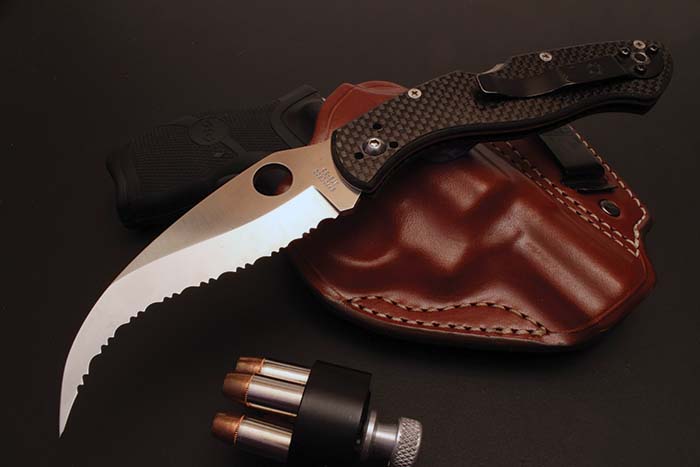
In 1997, Spyderco simplified the Civilian’s design to make it easier and more economical to produce. Textured black G-10 handle scales and a single stainless steel liner replaced the original aluminum handle construction, and the signature blade profile again progressed through several different steels, including GIN-1/G2, ATS-55, and ultimately VG-10. Like the first-generation version, the G-10-handled Civilian featured a pocket clip configured for right-side, tip-down carry only. Initially, it used Spyderco’s standard 3-screw clip, as found on the classic Police model, but later a “half-moon” clip with a C-shaped base was developed specifically for the Civilian.
Although the G-10 Civilian remained the standard production version of the knife, several upscale variants with carbon fiber scales were also produced, featuring ATS-55 blades, both plain and serrated edges, and in both left and right-handed configurations. The G-10 Civilian also continued its incremental evolution over the years, adding a Boye Dent (a recessed scallop in the lock bar that reduces the possibility of unintentional lock release) and two clip mounting position options for right-side tip-up or tip-down carry. Still an active part of the product line more than 25 years after its initial release, it remains a unique and truly iconic folding knife.

The Matriarch
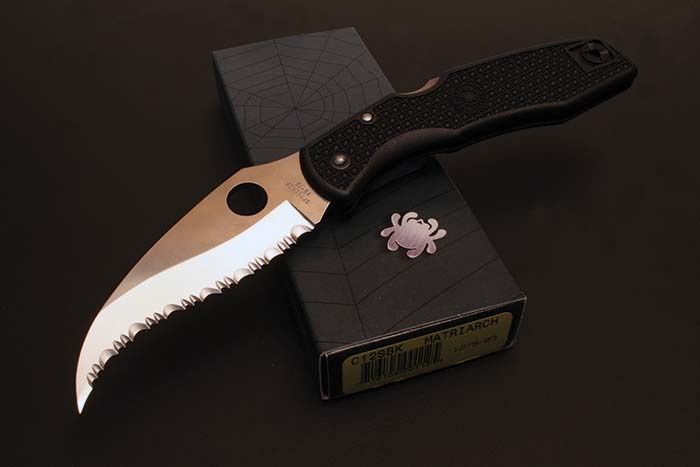
Although designed specifically for law enforcement, sales of the Civilian were never restricted to that community. As such, it also became popular among civilian self-defense practitioners. During the 1990s, sexual assault was extremely common in South Africa and Spyderco’s distributor there began recommending the Civilian as a personal-defense tool for women. Both the tool and the basic training he provided proved to be very effective, but unfortunately its price and limited production kept it from being available to all who wanted it. To solve that problem, the distributor suggested that Spyderco make a more economical version using the injection-molded fiberglass-reinforced-nylon (FRN) handles they helped pioneer. In 1999, Spyderco combined a hollow-ground Reverse “S” blade with the lightweight FRN handle of their best-selling Endura model to create the Matriarch – an inexpensive folder that offered the same voracious cutting performance as the Civilian.

In the early 2000s, the Matriarch was produced with both black and gray handles before it was ultimately discontinued from the line. In 2010, Spyderco brought it back with a full-flat-ground blade with both plain and fully serrated edges and a brown FRN handle. The brown-handled Matriarchs were produced as a limited-edition “Sprint” run and quickly sold out, but not before reigniting strong public interest in the design.
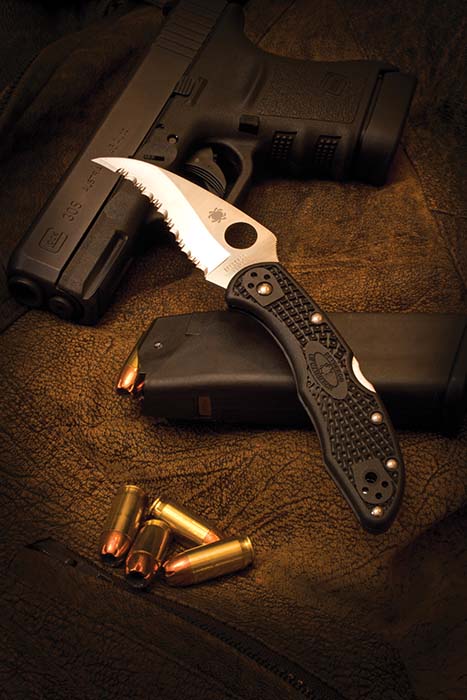

In response to that demand, Spyderco revamped the Matriarch concept by mating a serrated Reverse “S” blade with the highly evolved handle of their fourth-generation Endura. Unlike the solid FRN of the previous generations, this handle features skeletonized stainless steel liners for increased strength, molded FRN scales with an improved Bi-Directional Texture pattern, and a four-position clip that supports left or right-side tip-up or tip-down carry. Together with the blade’s round hole and the sturdy back lock, the Matriarch 2’s four-position clip supports all possible carry positions and makes every aspect of the knife’s carry, deployment, and operation completely ambidextrous.
The Emerson Opener
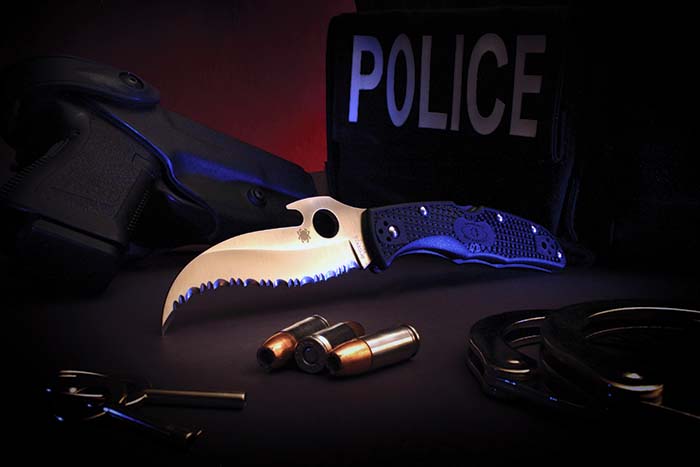
One of the disadvantages of a folding knife for personal defense is that it is slower to get into action than a fixed blade. While Spyderco’s round hole certainly speeds up the process by providing a purchase for quick one-handed opening, it still requires a practiced hand to get it right – especially under stress. To offer an even faster option, in 2013, Spyderco introduced a version of the Matriarch 2 featuring an Emerson Opening Feature, commonly known as an Emerson “wave.” This feature consists of an integral hook machined into the spine of the blade, just above the round hole. When the knife is carried tip-up in the pocket, this hook snags the lip of the pocket as it is drawn, automatically opening the blade. Since the blade opens as the knife leaves the pocket and does not require any secondary action, it is significantly faster than conventional one-hand-opening methods.
For many, the Emerson Opener version of the Matriarch 2 defined the ultimate personal-defense folder; but for armed professionals operating in environments where light discipline is a concern, its shiny satin-finished blade still left a lot to be desired. For them, and others who like the idea of “basic black” for their knives, an all-black version with titanium carbonitride-coated blade and hardware was added in 2015.
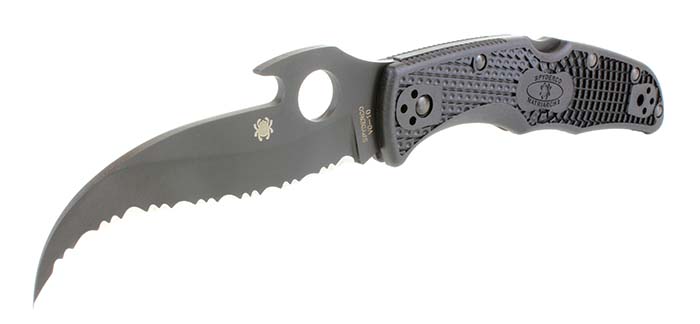
Size Does Matter
In many jurisdictions, the substantial blade length of the Civilian and Matriarch makes them illegal to carry. To provide a Reverse “S” option for these areas, Spyderco developed the Lil’ Matriarch – a scaled-down version of the concept based on the handle of their popular Delica 4 model. Introduced in 2012, it did not prove to be as popular as its bigger brothers and was discontinued in 2015. Despite its short commercial life, the shorter blade of this compact knife still packed the cutting power of the Reverse “S” profile and makes a potent defensive weapon if you can find one.
The Spyderco Civilian and the other knives of the Reverse “S” family that it inspired are some of the most visually stunning factory folders every produced. They are also incredibly potent personal-defense weapons that really do maximize the cutting power of a small blade through the advanced dynamics of their blades’ sinuous shapes. While no weapon is ever a replacement for sound training, the Civilian and Matriarch have performed as designed on numerous occasions, saving the lives and virtues of their owners when wielded with simple, instinctive combative skills. With that kind of pedigree behind them, they’ve certainly earned their iconic status.
| This article first appeared in Small Arms Review V19N8 (October 2015) |



